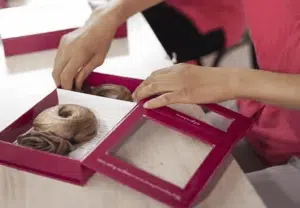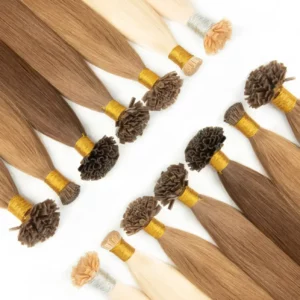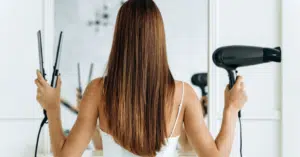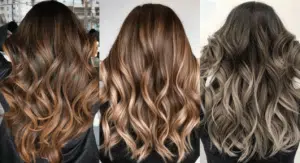Protecting your investment starts with proper care. If you or your clients wear sew-in extensions, daily habits make all the difference.
To care for sewn-in hair extensions, follow a routine of gentle cleansing, moisturizing, and tension-free maintenance. Avoid buildup near the scalp and use protective styling when sleeping or showering.

A beautiful install is only the beginning—long-term results come from how you treat the hair day to day.
What Are Sewn In Hair Extensions?
Sewn-in hair extensions are a method where wefts of hair are stitched directly into braids or tracks created on your natural hair. It’s one of the oldest and most secure methods in professional hairstyling.
Sewn-in extensions provide long-lasting volume and length without glue or tape, making them ideal for clients looking for durable results.

Types of Sewn-In Hair Extensions
- Machine Weft Sew-Ins: Common for volume and durability. Suitable for medium to thick hair.
- Hand-Tied Sew-Ins: Lightweight and less bulky. Great for finer hair.
- Flat Weft Sew-Ins: These wefts lie flat against the scalp and are sealed to prevent shedding. They are thinner than machine wefts and can be cut without fraying. Best for a seamless and discreet install.
- Genius Weft Sew-Ins: Combines the thinness of hand-tied with the cut-ability of machine wefts. There is no return hair, making it soft against the scalp. Genius wefts can be cut freely and customized per client.
Sew-ins work well for clients wanting semi-permanent solutions. Install time ranges from 1.5–3 hours depending on row count and method.
How to Care for Sewn In Hair Extensions?
Daily habits matter more than the install itself. Here’s a breakdown of what to do and when.
Proper care includes sulfate-free products, detangling, scalp hygiene, and protective measures when sleeping or washing.
Daily & Weekly Routine
- Brush Gently (2x daily): Use a loop brush or wide-tooth comb. Start from the ends and move upward. Hold the weft base while brushing.
- Hydrate and Moisturize: Apply a light leave-in conditioner to mid-lengths and ends. Use a silicone-free serum to retain moisture and add shine.
- Avoid Tension Styles: Avoid pulling your extensions into high buns or tight ponytails daily. This stresses the braids.
- Clean the Scalp Properly: Use a diluted sulfate-free shampoo with a nozzle bottle. Massage only the scalp. Rinse gently.
- Condition Thoughtfully: Condition the ends thoroughly. Avoid conditioner near the braid or weft area to prevent loosening.
- Deep Conditioning Mask: Apply every 2 weeks. Use a nourishing treatment focused on the ends.
- Dry Completely: After every wash, air-dry or blow-dry on low heat. Never leave the braided base damp.

How Do You Shower With Sew-In Extensions?
- Detangle the hair before stepping into the shower.
- Wet the hair slowly using lukewarm water.
- Focus shampoo on the scalp and use vertical finger motions.
- Rinse thoroughly until the scalp feels clean.
- Condition from mid-lengths to ends only.
- Squeeze gently to remove excess water. Pat dry with microfiber towel.
- Avoid circular rubbing motions when drying.
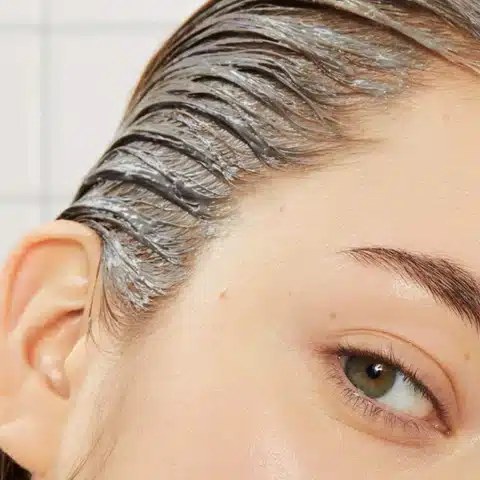
How Do You Sleep With Sewn-In Hair Extensions?
- Braid your hair in 1–2 loose plaits.
- Wrap hair in a silk scarf or use a silk/satin bonnet.
- Sleep on a silk pillowcase to reduce friction.
- Ensure hair is fully dry before bed.

Weekly Add-On Tips
- Use a light mist spray to refresh curls or waves between wash days.
- Clarify with an ACV rinse once a month to remove buildup.
- Visit the stylist every 6–8 weeks for a tension check and move-up.
Sew In Hair Extensions Pros and Cons
Sew-ins offer security and volume—but like all methods, they have trade-offs.
What Are the Advantages?
- Long-Lasting Results: With proper care, installs last 6–10 weeks.
- No Adhesive Needed: No glue or tape involved.
- Blends Well: Especially effective for thicker or textured hair.
- Reusability: High-quality wefts can be reused for multiple installs.
What Are the Disadvantages?
- Installation Time: Takes longer to apply than tape-ins.
- Scalp Access: Cleaning and moisturizing the scalp is more difficult.
- Tension Issues: Overly tight braiding can cause traction alopecia.
- Heavier Feel: Not ideal for those with fine or sensitive scalps.

Common Questions About Sewn-In Extensions
How Long Can You Wear Sewn-In Hair Extensions?
6 to 10 weeks is the ideal range,then move up by professionals . Stretching beyond that can cause matting, odor, or even hair damage from buildup.
Do Sewn-In Extensions Ruin Your Hair?
Not when installed by a trained stylist and removed properly. Most damage comes from incorrect installation or keeping them in too long.
How Much Does a Sew-In Usually Cost?
Install cost ranges $150–$600 depending on region, stylist expertise, and the type of weft used. Hair not included.
How Many Packs of Hair Do You Need for a Full Sew-In?
- Partial install: 1–2 bundles (100–200g)
- Full install: 2–3 bundles (200–300g)
- Extra thick/full: 3–4 bundles (300–400g)
My Opinion
As a professional in the hair industry for over 15 years, I’ve seen how good aftercare can make even a basic install look luxurious—and how neglect can ruin even the best hair. Sewn-ins are a great investment when the hair is high-quality and the routine is followed. I always tell my clients: the install is step one; care is everything else.
Here is a video of sewn in hair weft care impotance for your reference:
FAQ
Q1: Can I oil my scalp with a sew-in?
A1: Yes, but use lightweight oils and apply sparingly with a nozzle bottle.
Q2: Is it okay to swim with a sew-in?
A2: It’s possible, but always wear a swim cap and wash immediately after to remove chlorine or salt.
Q3: Can I workout with sew-in extensions?
A3: Absolutely. Just tie hair up and rinse sweat off the scalp regularly.
Q4: How often should I wash my sew-in?
A4: Every 7–10 days is ideal to prevent buildup and odor.
Q5: Can I dye my sew-in extensions?
A5: Yes, if the hair is 100% human and unprocessed. Always do a strand test first.
Q6: What products should I avoid?
A6: Avoid alcohol-based sprays, heavy butters near the roots, and anything that leaves residue.
Q7: Can I use dry shampoo on a sew-in?
A7: Occasionally, but avoid overuse near the base to prevent buildup and odor.
Q8: What happens if my braid base gets wet?
A8: You must dry it thoroughly. Damp braids can harbor mold and mildew, causing odor and hair damage.
Q9: Can I flat iron or curl my sew-in extensions?
A9: Yes, but always use a heat protectant and avoid direct heat on the weft attachment point.
Q10: What’s the difference between sew-ins and microlinks?
A10: Sew-ins use braids and thread; microlinks are applied strand-by-strand using tiny beads—no braiding required.
Q11: Can I go to the beach with sewn-in extensions?
A11: Yes, but apply a leave-in protectant and cover your hair when not swimming to avoid sun damage.
Q12: Should I remove my sew-in at home?
A12: No. Always return to your stylist. Improper removal can tear your natural hair or damage the wefts.
Conclusion
Sewn-in extensions offer a long-lasting, low-maintenance option—when cared for properly. Protect your investment with the right routine, and the results will speak for themselves.
where to buy sewn in hair extensions
Hibiscus Hair Manufacturer has been dedicated to producing high-quality sewn in hair extensions for 25 years and is a recognized leader in the industry. If you are interested in finding a reliable hair extensions supplier and wholesale for your brand, please visit our website for more information:
HAIR WEFT

